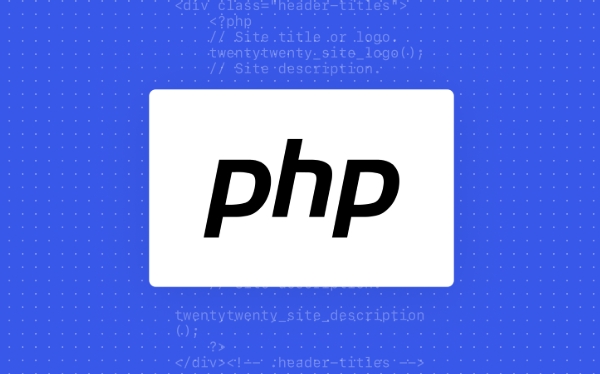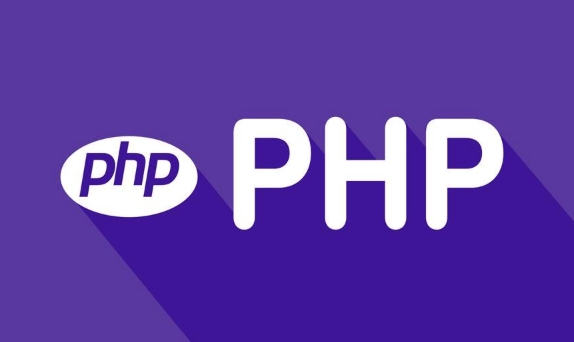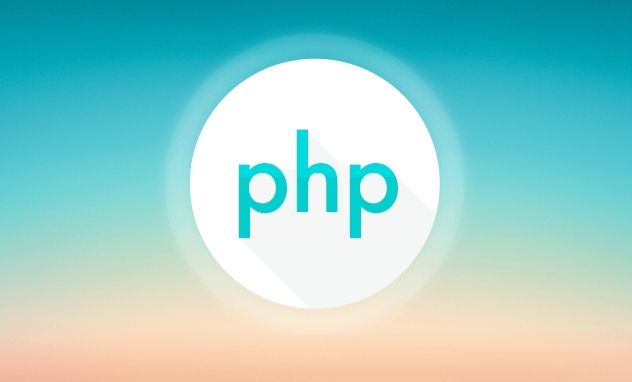The Evolving Landscape: What's Next for the PHP Language?
Jul 28, 2025 am 04:31 AMPHP is not dead — it is evolving quietly but meaningfully through performance improvements, ecosystem strength, and modern development practices. 1. Performance continues to improve with the maturing JIT compiler in PHP 8.0 and ongoing engine optimizations in PHP 8.4 and beyond, particularly benefiting CLI tools, data processing, and microservices. 2. The ecosystem remains robust, with Laravel dominating startups and agencies, Symfony powering enterprise systems, and Composer supporting over 300,000 packages on Packagist, making PHP a pragmatic choice for scalable web applications. 3. Type safety is advancing with union types, readonly properties, improved static analysis via tools like PHPStan and Psalm, and better type inference, helping maintain large codebases with fewer errors. 4. PHP 8.4 will introduce enums with methods, traits with constants, enhanced type variance, and readonly parameters, while the RFC process explores pattern matching and error handling, ensuring gradual language improvements without breaking backward compatibility. The future of PHP lies in steady evolution — delivering more speed, better typing, stronger tooling, and long-term reliability for real-world applications, ensuring its role as a foundational force on the web.

PHP isn’t dead — it’s just growing quietly, and that’s exactly what’s keeping it alive.

Once the dominant force behind web development, PHP has taken a backseat in recent years to flashier languages and frameworks. But far from stagnating, PHP is evolving in practical, performance-driven ways that matter to developers who build real-world applications every day.
So what’s next for PHP? Not revolution — but steady, meaningful evolution.

1. Performance Gains Keep Accelerating
One of PHP’s biggest shifts in recent years has been its focus on speed. PHP 8.0 introduced the JIT (Just-In-Time) compiler, a major technical upgrade that promised — and delivered — performance improvements, especially in CPU-intensive tasks.
But here’s the thing: JIT is still maturing. While it doesn’t dramatically speed up typical web requests (where PHP has long been fast enough), it’s becoming increasingly useful for:

- CLI tools and background processing
- Data transformation and analysis
- Microservices and non-web use cases
Future versions (like PHP 8.4 and beyond) continue to refine the JIT and optimize the engine. We’re likely to see more low-level improvements that make PHP not just fast, but consistently fast across different workloads.
And let’s not forget: PHP 8 brought union types, attributes (a native syntax for annotations), and named arguments — quality-of-life features that make code cleaner and safer. These aren’t flashy, but they reduce bugs and improve developer experience.
2. Ecosystem Strength Over Language Hype
PHP isn’t winning mindshare with viral frameworks or trendy syntax. Instead, its strength lies in its ecosystem:
- Laravel continues to dominate backend development for startups and agencies, with tools like Livewire and Inertia.js blurring the line between full-stack and SPA development.
- Symfony powers enterprise applications and underpins Drupal and parts of Shopify.
- Composer has matured into a reliable dependency manager, and packagist.org hosts over 300,000 packages.
The future of PHP isn’t about becoming the next Rust or Go — it’s about being the pragmatic choice for building maintainable, scalable web apps quickly. The language is increasingly a solid foundation, not the headline.
3. Type Safety and Modern Development Practices
PHP is slowly but surely becoming more type-safe. With each version, the language adds features that help developers catch errors early:
- Union and intersection types
- Improved static analysis (tools like Psalm and PHPStan are now essential in many teams)
- Readonly properties and first-class callable syntax in PHP 8.1 and 8.2
These changes make PHP feel more like a modern language, even if it’s playing catch-up. The goal isn’t to turn PHP into TypeScript — it’s to make large codebases easier to maintain without sacrificing flexibility.
We’ll likely see tighter integration between the language and static analyzers in the future, possibly even optional “strict mode” enforcement at runtime.
4. What’s on the Horizon? (PHP 8.4 and Beyond)
PHP 8.4, expected in late 2024, includes some notable additions:
- Enums with methods and promotions — more powerful than the basic enums introduced in 8.1
- Traits with constants — a small but useful improvement
- Improved type variance and inference
-
New
readonlymodifier for parameters (reducing boilerplate)
The RFC process remains active, with proposals ranging from pattern matching to improved error handling. While not all will land, the community is clearly focused on making PHP more expressive and less error-prone.
And long-term? Don’t expect radical changes. The PHP core team prioritizes backward compatibility and stability — which is exactly why companies like Facebook (now Meta), Wikipedia, and Slack still rely on it.
So what’s next for PHP?
More speed. Better typing. Stronger tooling. A mature, reliable platform that quietly powers much of the web — without needing to make noise about it.
It won’t win developer popularity contests, but it doesn’t have to. As long as it keeps evolving in practical ways, PHP will remain a solid choice for building things that need to work, scale, and last.
And honestly? That’s enough.
The above is the detailed content of The Evolving Landscape: What's Next for the PHP Language?. For more information, please follow other related articles on the PHP Chinese website!

Hot AI Tools

Undress AI Tool
Undress images for free

Undresser.AI Undress
AI-powered app for creating realistic nude photos

AI Clothes Remover
Online AI tool for removing clothes from photos.

Clothoff.io
AI clothes remover

Video Face Swap
Swap faces in any video effortlessly with our completely free AI face swap tool!

Hot Article

Hot Tools

Notepad++7.3.1
Easy-to-use and free code editor

SublimeText3 Chinese version
Chinese version, very easy to use

Zend Studio 13.0.1
Powerful PHP integrated development environment

Dreamweaver CS6
Visual web development tools

SublimeText3 Mac version
God-level code editing software (SublimeText3)

Hot Topics
 Object-Relational Mapping (ORM) Performance Tuning in PHP
Jul 29, 2025 am 05:00 AM
Object-Relational Mapping (ORM) Performance Tuning in PHP
Jul 29, 2025 am 05:00 AM
Avoid N 1 query problems, reduce the number of database queries by loading associated data in advance; 2. Select only the required fields to avoid loading complete entities to save memory and bandwidth; 3. Use cache strategies reasonably, such as Doctrine's secondary cache or Redis cache high-frequency query results; 4. Optimize the entity life cycle and call clear() regularly to free up memory to prevent memory overflow; 5. Ensure that the database index exists and analyze the generated SQL statements to avoid inefficient queries; 6. Disable automatic change tracking in scenarios where changes are not required, and use arrays or lightweight modes to improve performance. Correct use of ORM requires combining SQL monitoring, caching, batch processing and appropriate optimization to ensure application performance while maintaining development efficiency.
 Building Immutable Objects in PHP with Readonly Properties
Jul 30, 2025 am 05:40 AM
Building Immutable Objects in PHP with Readonly Properties
Jul 30, 2025 am 05:40 AM
ReadonlypropertiesinPHP8.2canonlybeassignedonceintheconstructororatdeclarationandcannotbemodifiedafterward,enforcingimmutabilityatthelanguagelevel.2.Toachievedeepimmutability,wrapmutabletypeslikearraysinArrayObjectorusecustomimmutablecollectionssucha
 Laravel raw SQL query example
Jul 29, 2025 am 02:59 AM
Laravel raw SQL query example
Jul 29, 2025 am 02:59 AM
Laravel supports the use of native SQL queries, but parameter binding should be preferred to ensure safety; 1. Use DB::select() to execute SELECT queries with parameter binding to prevent SQL injection; 2. Use DB::update() to perform UPDATE operations and return the number of rows affected; 3. Use DB::insert() to insert data; 4. Use DB::delete() to delete data; 5. Use DB::statement() to execute SQL statements without result sets such as CREATE, ALTER, etc.; 6. It is recommended to use whereRaw, selectRaw and other methods in QueryBuilder to combine native expressions to improve security
 css dark mode toggle example
Jul 30, 2025 am 05:28 AM
css dark mode toggle example
Jul 30, 2025 am 05:28 AM
First, use JavaScript to obtain the user system preferences and locally stored theme settings, and initialize the page theme; 1. The HTML structure contains a button to trigger topic switching; 2. CSS uses: root to define bright theme variables, .dark-mode class defines dark theme variables, and applies these variables through var(); 3. JavaScript detects prefers-color-scheme and reads localStorage to determine the initial theme; 4. Switch the dark-mode class on the html element when clicking the button, and saves the current state to localStorage; 5. All color changes are accompanied by 0.3 seconds transition animation to enhance the user
 go by example generics
Jul 29, 2025 am 04:10 AM
go by example generics
Jul 29, 2025 am 04:10 AM
Go generics are supported since 1.18 and are used to write generic code for type-safe. 1. The generic function PrintSlice[Tany](s[]T) can print slices of any type, such as []int or []string. 2. Through type constraint Number limits T to numeric types such as int and float, Sum[TNumber](slice[]T)T safe summation is realized. 3. The generic structure typeBox[Tany]struct{ValueT} can encapsulate any type value and be used with the NewBox[Tany](vT)*Box[T] constructor. 4. Add Set(vT) and Get()T methods to Box[T] without
 python json loads example
Jul 29, 2025 am 03:23 AM
python json loads example
Jul 29, 2025 am 03:23 AM
json.loads() is used to parse JSON strings into Python data structures. 1. The input must be a string wrapped in double quotes and the boolean value is true/false; 2. Supports automatic conversion of null→None, object→dict, array→list, etc.; 3. It is often used to process JSON strings returned by API. For example, response_string can be directly accessed after parsing by json.loads(). When using it, you must ensure that the JSON format is correct, otherwise an exception will be thrown.
 python parse date string example
Jul 30, 2025 am 03:32 AM
python parse date string example
Jul 30, 2025 am 03:32 AM
Use datetime.strptime() to convert date strings into datetime object. 1. Basic usage: parse "2023-10-05" as datetime object through "%Y-%m-%d"; 2. Supports multiple formats such as "%m/%d/%Y" to parse American dates, "%d/%m/%Y" to parse British dates, "%b%d,%Y%I:%M%p" to parse time with AM/PM; 3. Use dateutil.parser.parse() to automatically infer unknown formats; 4. Use .d
 css dropdown menu example
Jul 30, 2025 am 05:36 AM
css dropdown menu example
Jul 30, 2025 am 05:36 AM
Yes, a common CSS drop-down menu can be implemented through pure HTML and CSS without JavaScript. 1. Use nested ul and li to build a menu structure; 2. Use the:hover pseudo-class to control the display and hiding of pull-down content; 3. Set position:relative for parent li, and the submenu is positioned using position:absolute; 4. The submenu defaults to display:none, which becomes display:block when hovered; 5. Multi-level pull-down can be achieved through nesting, combined with transition, and add fade-in animations, and adapted to mobile terminals with media queries. The entire solution is simple and does not require JavaScript support, which is suitable for large






